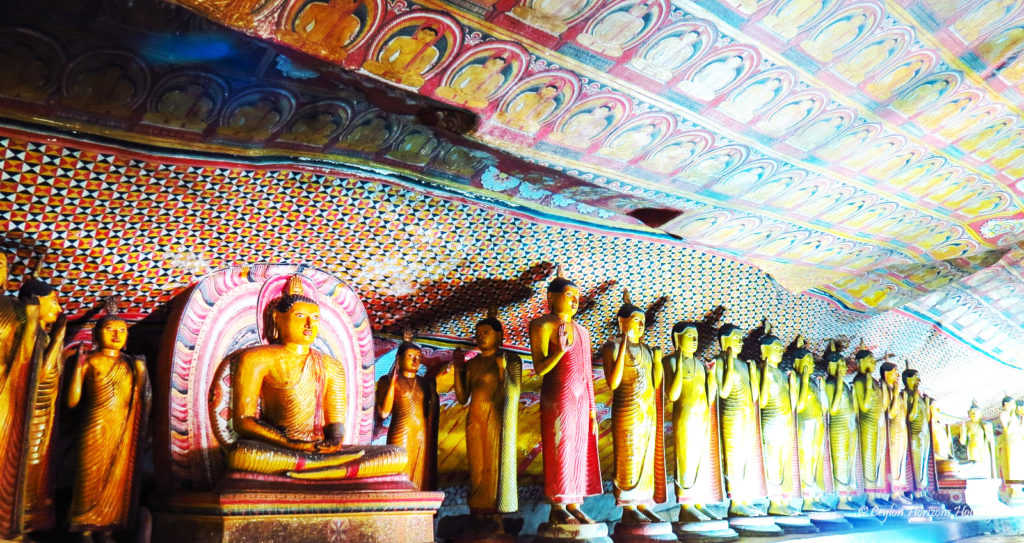Dambulla
Related Tours
Dambulla has also one of the richest collections of Sri Lankan sculpture in the form of a large number of Buddha statues in Standing, Seating and Reclining or recumbent as well as few figures of Bidhisathva “ The Aspirant Buddha Statues” , Gods Statues and rare royal portrait sculptures.
Dambulla

Ancient Buddhist monastery at Dambulla is well known for cave or rock temples and its well preserved 18th century sculptures and wall paintings. It is one of the largest rock shelter architecture temple complexes contain an internal area more than 1000 square meters which are situated in South and Southeast Asian region and one of the most important Buddhist pilgrimage site in Sri Lanka. Dambulla is extremely archaeologically complicated and historical important place located in Central part of Sri Lanka.

History of Dambulla
Written History of Dambulla goes back to 2nd century B.C King Saddhatissa (137-119 B.C) period in Anuradhapura Kingdom. In this period Dambulla cave was donated to Buddhist monks as dwelling place. It is proved by the stone inscription which is written under the drip line of Dambulla main rock cave. It says “
Devanapiya gaminitissa maharajasa lene.
Agatha anagatha chathudisa sagasa dene.
Which means “the cave of the great king Gamini tissa who is delighted by gods, is given this cave to the monks of the four quarters present and future”.
According to archaeologists in Sri Lanka King Gamini Tissa refers King Saddha Tissa.
The traditional founder of Dambulla temple is King Wattagamani Abhaya (103 & 89 – 77 B.C) in Anuradhapura Kingdom. The slab inscription in Polonnaruwa named “Gal Potha/ Stone Book inscription” In the 12th century A.D has been written King Nissanka Malla had gilded 73 Buddha Statues and named Dambulla as “Swarna Giri Guha / Golden Cave temple”
With the passage of time people believed Dambulla temple has miraculous powers and it was used for making vows to overcome problems and fulfilling those vows. For that they painted and offered New Buddha statues. With the effect of these things, at present can be seen paintings belongs to Kandiyan period generation of 18th century A.D. There are 161 statues can be seen within the whole temple premises.

Caves and Paintings
According to oral tradition the first ever painter of Dambulla cave temple might be “Bodhinarayana Moolachari” who lived during the period of King Walagamba. present paintings belongs to Kandiyan period “Neelagama Sittara” Artist generation of 18th century A.D. World famous “Tempera” Painting which means Dry plaster method and folk style have been used for cave paintings. The common features of this Buddha statues are Nimbus, Halo, Shawls, and tight lips and colorfulness. Now Dambulla cave was divided to 5 main compartments named
- Devaraja Cave
- Maharaja Cave
- Maha Aluth Vihara
- Pachchima Vihara
- Devana Aluth Vihara







































-
Recent Posts
Connect to Us
- Error: Please check if you enter Instagram username and Access Token in Theme Setting > Social Profiles
Connect to Us

-
Ceylon Horizons Holidays
We are a family of inbound travel agents in Sri Lanka who strives to craft a lifetime worth of experience with unforgettable memories. At Ceylon Horizons holidays, we take care of your holiday from the beginning of itinerary designing, accommodation planning and booking to scheduling the traveling needs.
Contact Us
Information



